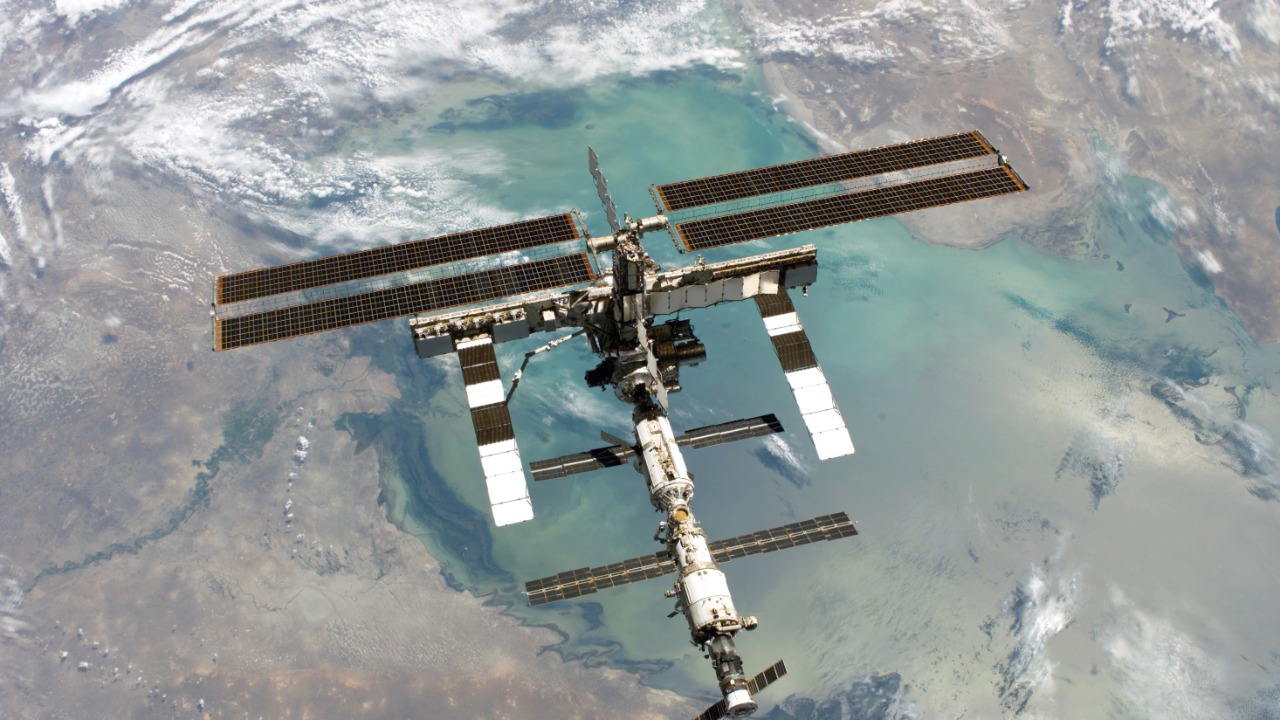
The International Space Station (ISS) is a marvel of human engineering, stretching approximately 109 meters in length, akin to a six-story building laid on its side. With a mass exceeding 420 metric tons, it stands as the largest human-made structure in space. Since its initial launch in 1998, the ISS has orbited Earth at an altitude of around 400 kilometers, serving as a continuous laboratory for over two decades. As it celebrated its 25th anniversary of continuous human habitation in 2023, the ISS’s vast scale and enduring legacy in space exploration continue to captivate the world.
Physical Dimensions of the ISS
The ISS’s impressive size is a testament to human ingenuity. Its overall length of 109 meters is a testament to the scale of this spaceborne laboratory, as detailed in recent reporting. The station’s width, spanning 73 meters across its solar arrays, is crucial for power generation, enabling the station’s various operations.
Inside, the ISS offers a habitable volume of about 388 cubic meters, roughly equivalent to the interior of a Boeing 747 jumbo jet. This space is divided among several pressurized modules, each serving a unique purpose, as outlined in NASA’s reference on the station.
Mass and Structural Components
The ISS’s total mass, over 420 metric tons, is a combination of various modules and components. Notable among these are the Russian Zarya and the U.S. Unity modules, as detailed in historical facts. The station comprises 16 pressurized modules and an integrated truss structure, a testament to the complexity of its design and assembly, as reflected upon in anniversary reflections.
The station’s solar array wingspan, contributing to its 73-meter width, is a critical component of its energy systems. These arrays capture and convert sunlight into electricity, powering the station’s numerous systems and experiments, as explained in educational overviews.
Construction Timeline and Milestones
The construction of the ISS began with the launch of the Zarya module on November 20, 1998. This module served as the cornerstone for the entire station, as noted in tracking history. Over the years, several key modules were added, such as the Destiny laboratory in 2001, culminating in the completion of major assembly by 2011, as documented in NASA documentation.
One of the most significant milestones for the ISS was the 25th anniversary of continuous habitation, celebrated on November 2, 2023. This achievement underscores the station’s role as a symbol of international cooperation and scientific advancement, as covered in evaluative coverage.
Orbital Path and Visibility
The ISS orbits Earth at an altitude of approximately 400 kilometers, completing 16 orbits per day. This low Earth orbit allows for a wide range of scientific experiments and observations, as detailed in general station info. From Earth, the ISS appears as a bright, fast-moving object in the sky, often mistaken for a star, as noted in tracking resources.
The station’s orbit takes it over 90 degrees of latitude, allowing it to pass over a significant portion of the Earth’s surface. This international ground track is a testament to the station’s global reach and impact, as explained in youth-oriented explanations.
International Collaboration Scale
The ISS is a product of international collaboration, involving five space agencies—NASA, Roscosmos, ESA, JAXA, and CSA. These agencies contributed to the station’s 358-foot truss and other components, as detailed in anniversary analysis. The station has a crew capacity for up to 7 astronauts, with participants hailing from 19 countries, as noted in comprehensive facts.
Over the years, the ISS has hosted over 3,000 experiments, emphasizing the multinational nature of its research. These experiments span a wide range of scientific disciplines, contributing to our understanding of life in space and on Earth, as outlined in NASA overviews.
Future Prospects and Decommissioning
Looking ahead, plans are in place for deorbiting the ISS by 2030. These plans include protocols for safe re-entry to prevent any potential harm, as noted in recent evaluations. The future of space habitation is likely to involve commercial space stations, a transition that is already underway, as reported in forward-looking reports.
The ISS’s legacy extends beyond its physical presence in space. It has led to advancements in various technologies, such as water recycling systems, that have applications on Earth. These impacts underscore the station’s enduring significance, as detailed in educational summaries.
More from MorningOverview